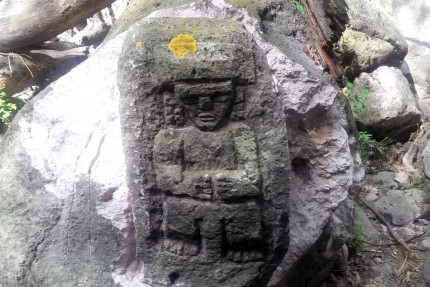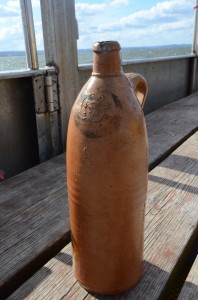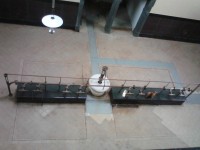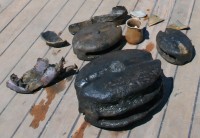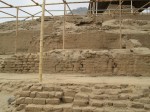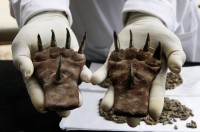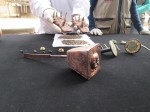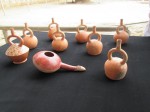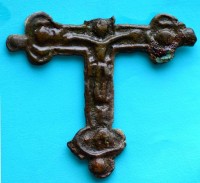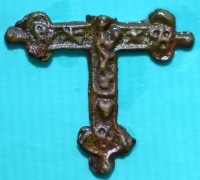 In December of 2011, Japanese retail clothing mogul Yuzo Yagi offered to donate €1 million to restore the tomb of Gaius Cestius, a pointy marble-clad vanity pyramid built in Rome in the 1st century B.C. At the time, the agreement was scheduled to be signed in January of 2012 and work to start in April, but the donation agreement didn’t get signed until March, the scaffolding didn’t begin to go up until November and it wasn’t finished until February. Actual restoration work began in March of 2013. Then in a shocking twist, it was completed five months early.
In December of 2011, Japanese retail clothing mogul Yuzo Yagi offered to donate €1 million to restore the tomb of Gaius Cestius, a pointy marble-clad vanity pyramid built in Rome in the 1st century B.C. At the time, the agreement was scheduled to be signed in January of 2012 and work to start in April, but the donation agreement didn’t get signed until March, the scaffolding didn’t begin to go up until November and it wasn’t finished until February. Actual restoration work began in March of 2013. Then in a shocking twist, it was completed five months early.
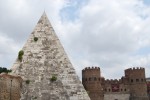 The Culture Ministry contacted Yuzo Yagi and asked him to donate another million euros for a second stage of restoration that would return the Carrara marble cladding to its original whiteness as opposed to its longstanding grimy gray. White happens to be Mr. Yagi’s favorite color — he is known for his stylish all-white ensembles — so he was happy to double his original donation.
The Culture Ministry contacted Yuzo Yagi and asked him to donate another million euros for a second stage of restoration that would return the Carrara marble cladding to its original whiteness as opposed to its longstanding grimy gray. White happens to be Mr. Yagi’s favorite color — he is known for his stylish all-white ensembles — so he was happy to double his original donation.
 In December of 2013 he signed a second donation agreement, again requiring nothing more than a discreet plaque near, not on, the pyramid, naming him as the donor. Even during the restoration the only signs on the pyramid are informational billboards at ground level and white banners assigning themes to each side — the mystical side, the scientific side, the historical side and the secret side. The billboards explain the history of the pyramid through these four themes. Yagi’s company gets credit for his patronage on the billboards, but just in discreet text lines. No logos or glaring anything. The images of the pyramid and information of its background dominate completely. Masterpiece Theater is more cluttered than that, like by a lot.
In December of 2013 he signed a second donation agreement, again requiring nothing more than a discreet plaque near, not on, the pyramid, naming him as the donor. Even during the restoration the only signs on the pyramid are informational billboards at ground level and white banners assigning themes to each side — the mystical side, the scientific side, the historical side and the secret side. The billboards explain the history of the pyramid through these four themes. Yagi’s company gets credit for his patronage on the billboards, but just in discreet text lines. No logos or glaring anything. The images of the pyramid and information of its background dominate completely. Masterpiece Theater is more cluttered than that, like by a lot.
Now phase two is well on the way to being finished and they’re ahead of schedule again. Restorers expect to be done three months before the expected November deadline. The early finish means Yagi isn’t ready for an inauguration ceremony. He’s thinking of just waiting until next summer and making a big event. He’s also so pleased with how this venture has gone that he’s contemplating donating more money for the preservation of another monument.
 Yuzo Yagi toured the pyramid on Tuesday, accompanied by Culture Minister Dario Franceschini, who took the opportunity to promote Mr. Yagi’s dignified generosity as a model for future donors and to tout the state’s new tax incentives for businesses who donate to cultural heritage projects.
Yuzo Yagi toured the pyramid on Tuesday, accompanied by Culture Minister Dario Franceschini, who took the opportunity to promote Mr. Yagi’s dignified generosity as a model for future donors and to tout the state’s new tax incentives for businesses who donate to cultural heritage projects.
You can see how great the pyramid looks inside and out in this news story on Mr. Yagi’s visit:
 Oh man, I want to wear a hardhat and go inside! If the burial chamber looks modest it’s because Augustus’ sumptuary law of 18 B.C. forbade ostentatious luxury in tombs. Unlike the Egyptians whose tombs he modeled his own after, Gaius Cestius was not buried with lavish treasures to accompany him to the afterlife. He got white walls with small frescoes of alternating winged Victories and ceremonial vessels, plus a few bronze statues of him outside the pyramid.
Oh man, I want to wear a hardhat and go inside! If the burial chamber looks modest it’s because Augustus’ sumptuary law of 18 B.C. forbade ostentatious luxury in tombs. Unlike the Egyptians whose tombs he modeled his own after, Gaius Cestius was not buried with lavish treasures to accompany him to the afterlife. He got white walls with small frescoes of alternating winged Victories and ceremonial vessels, plus a few bronze statues of him outside the pyramid.
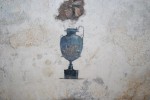 The frescoes were in serious danger from water leaking through the marble slabs into the brick and concrete structure. Those leaks have all been plugged now. Also gone are the severe microorganism infestation that was making a meal of the marble and the copious vegetation sprouting through the damaged exterior walls. The pyramid hasn’t looked this good or been this healthy since it was built, I wager.
The frescoes were in serious danger from water leaking through the marble slabs into the brick and concrete structure. Those leaks have all been plugged now. Also gone are the severe microorganism infestation that was making a meal of the marble and the copious vegetation sprouting through the damaged exterior walls. The pyramid hasn’t looked this good or been this healthy since it was built, I wager.
Here’s a 3D animation of a point cloud generated from laser scan data before the scaffolding went up. It gave restorers a clear picture of the condition of all four sides, the deterioration of the marble cladding, any unevenness in the surface or cracks and evidence of shear.
